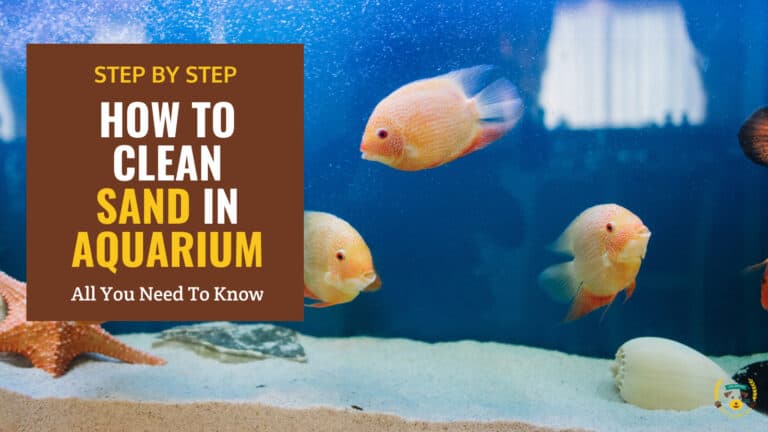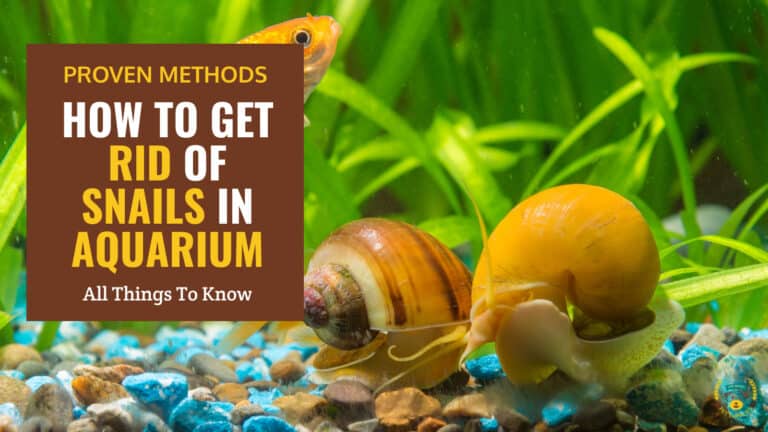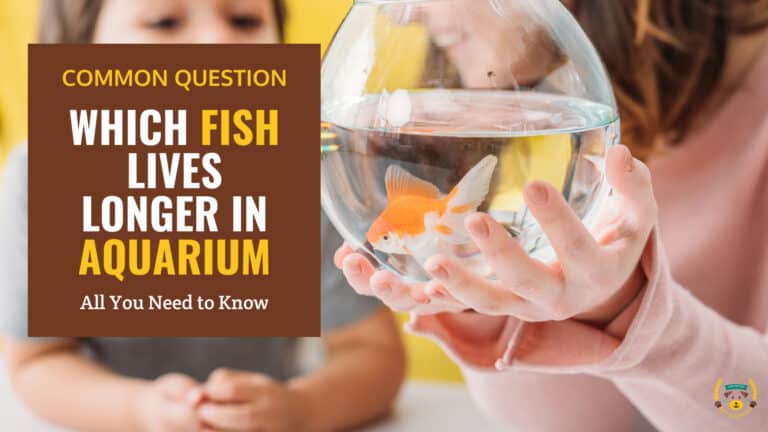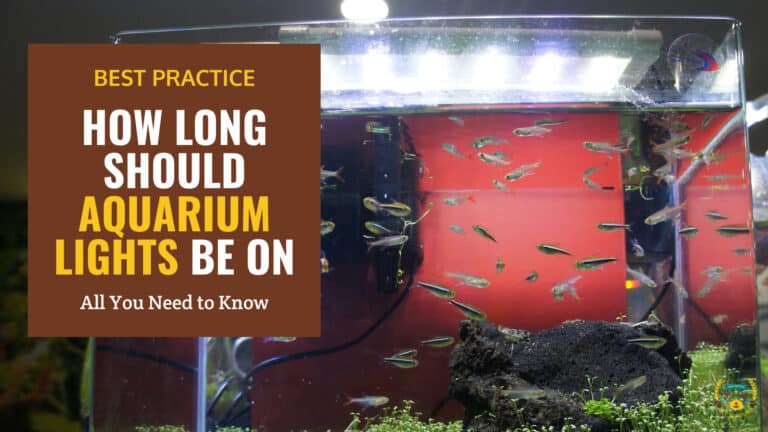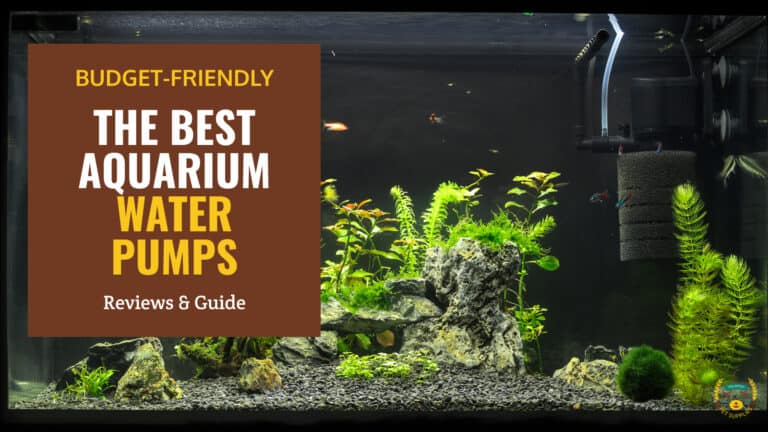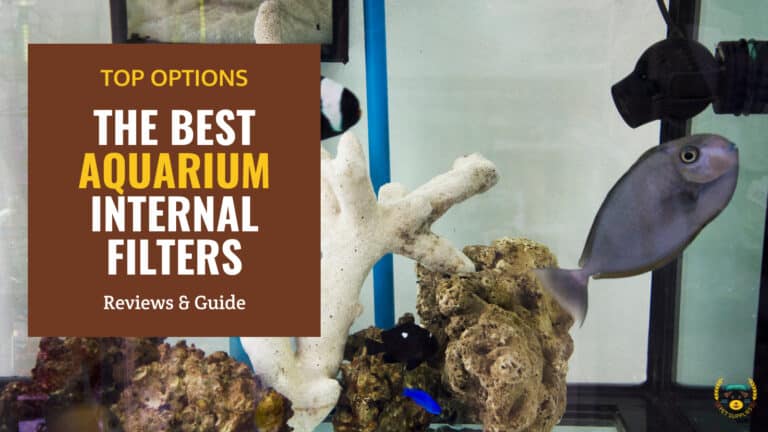How To Reduce Nitrates in Aquarium?
Last updated: March 30, 2024
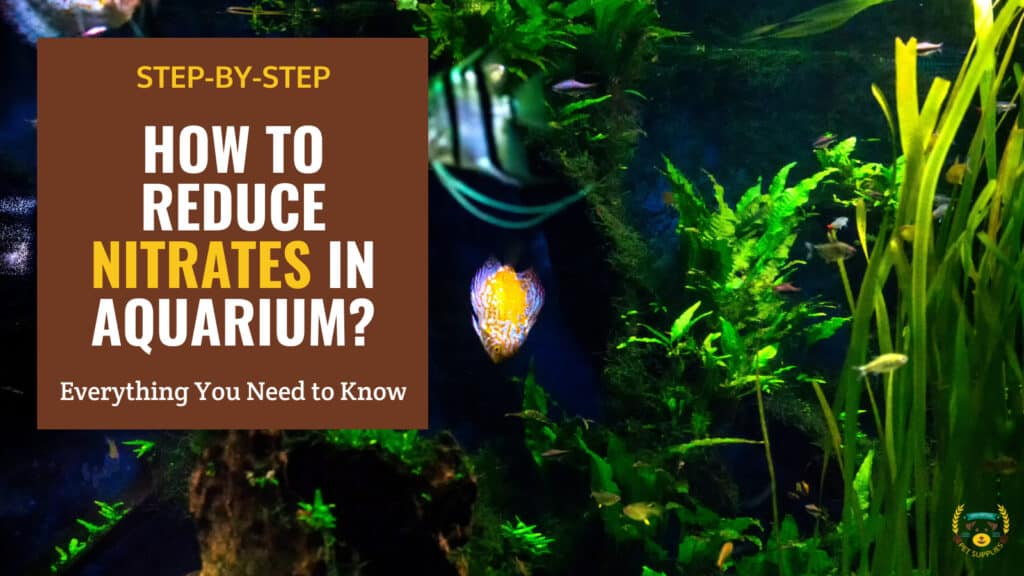
Summary
- Ways to remove excess nitrate include large water changes, live plants, algae scrubbers, denitrification media, protein skimming, and reducing feeding.
- To rapidly lower high nitrate, test current level, adjust pH gradually, drain 50-70% of water, refill, retest, and repeat water changes as needed.
- After reducing high levels, continue frequent testing and maintenance like water changes, plants, upgraded filtration, etc. to maintain lower nitrate long-term.
- Go slowly with delicate species. No need to eliminate all nitrate, just reduce to safe levels. Quarantine new additions until nitrate is under control.
Nitrate accumulation is a common issue that aquarium hobbyists face over time, especially those with long-established tanks. As fish and other organisms produce waste and leave uneaten food, nitrate builds up from the nitrogen cycle.
A very high nitrate level can be problematic in fresh and saltwater since it encourages excessive algae growth, disrupting the balance of the ecosystem. That's why keeping nitrate at a suitable level is essential. However, those maintenance practices sometimes get ignored. Before you know it, your tank is showing clear signs of old tank syndrome - increasing nitrates, algae overgrowth and stressed inhabitants. The solution lies in reducing the nitrate level quickly and safely back to an acceptable range.
This article will provide a rapid nitrate reduction method perfect for rescuing a tank with dangerously high levels. We'll cover the basics of nitrate in aquariums, the dangers of accumulation, ideal target levels, and a safe step-by-step process for large water changes. You'll also learn maintenance tips for keeping nitrate down long-term once you've restored balance.
- 1) Understanding Nitrate in Aquariums
- 2) Dangers of High Nitrate Levels
- 3) Monitoring and Testing Nitrate
- 4) Ways to Remove Nitrate from Aquariums
- 5) Step-by-Step Method for Rapid Nitrate Reduction
- 6) Important Considerations
- 7) Maintaining Low Nitrate After Reduction
- 8) Frequently Asked Questions
- 9) Conclusion
Understanding Nitrate in Aquariums
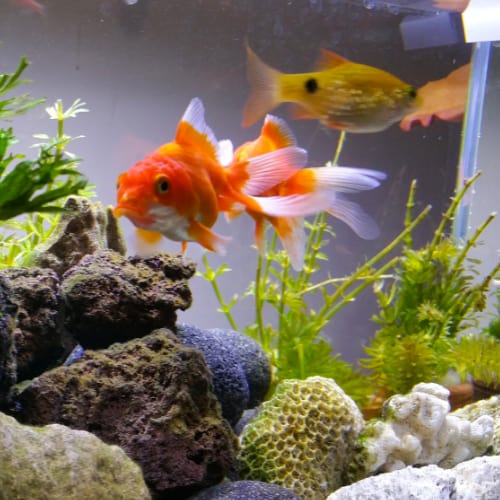
To understand how to reduce nitrate, it helps to first understand what it is and how it accumulates in home aquariums. Nitrate is a nitrogen-based compound that is produced as a byproduct of the nitrogen cycle.
Where Nitrate Comes From
In an aquarium, nitrate originates from the biological breakdown of waste products like fish urine, uneaten food, and other organic debris. Here's a quick overview of the process:
- Fish, invertebrates, and other animals excrete ammonia as a waste product. This ammonia is toxic to inhabitants.
- Special bacteria convert the ammonia first into nitrite, then into nitrate. This is known as the nitrogen cycle.
- The nitrate gradually builds up in the water over time since it has nowhere to go. Water changes are needed to remove it.
So, nitrate comes primarily from the biological processes of the tank's inhabitants. The more stocked a tank is or the more it is fed, the higher the nitrate creep tends to be.
Problems Caused by Nitrate Accumulation
Allowing nitrate to build up comes with a range of issues:
- It encourages algae growth, which can quickly take over a tank.
- High levels are toxic, especially to sensitive marine species.
- It contributes to stress, disease, lack of growth, and reproductive issues.
- Visual signs like brown algae and lackluster fish point to underlying high nitrate.
Essentially, letting nitrate rise ruins the balance of the closed ecosystem. Tanks require maintenance through partial water changes, filters, plants, and other methods to control nitrate. Otherwise, the health of all inhabitants suffers.
Dangers of High Nitrate Levels
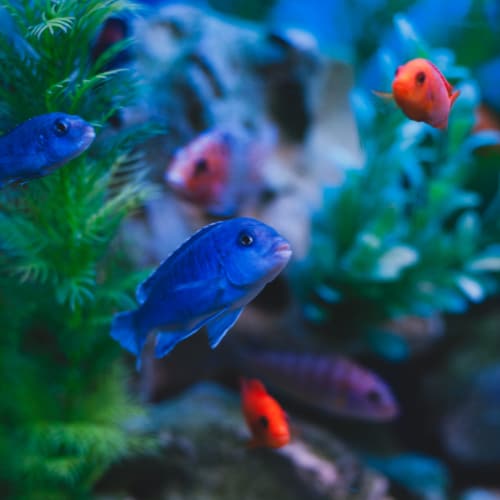
In the previous section, we looked at where nitrate comes from and how it accumulates in aquarium water over time. Now let's explore why high nitrate levels are so problematic for freshwater and saltwater tanks.
Toxicity Thresholds
While nitrate is less toxic compared to ammonia and nitrite, it can still cause issues at higher concentrations:
- Freshwater aquariums: Fish and plants generally tolerate nitrate up to about 200 ppm (parts per million) before experiencing ill effects. However, lower levels are still recommended.
- Saltwater aquariums: Invertebrates like corals and clams begin to suffer when nitrate climbs above 20 ppm. Reef tanks should maintain lower than 10 ppm.
So saltwater organisms are much more sensitive to nitrate compared to freshwater species. That's why it's crucial to know the threshold for your particular tank inhabitants.
Negative Impacts of High Nitrate
If nitrate is allowed to creep too high, some potential consequences include:
- Stunted growth and lack of breeding - High levels impede proper development and reproduction.
- Stress and disease - Nitrate contributes to osmoregulatory stress, making inhabitants prone to illnesses.
- Algae overgrowth - Nitrate fertilizes nuisance algae like hair algae, choking out desired plants.
- Ecosystem disruption - Imbalances allow some organisms to dominate, preventing diversity.
- Livestock deaths - Extremely high nitrate can directly kill more sensitive fish, invertebrates, and corals.
Clearly, maintaining lower nitrate through regular testing and water changes is crucial. Next, we'll cover how to properly monitor levels in your aquarium.
Monitoring and Testing Nitrate
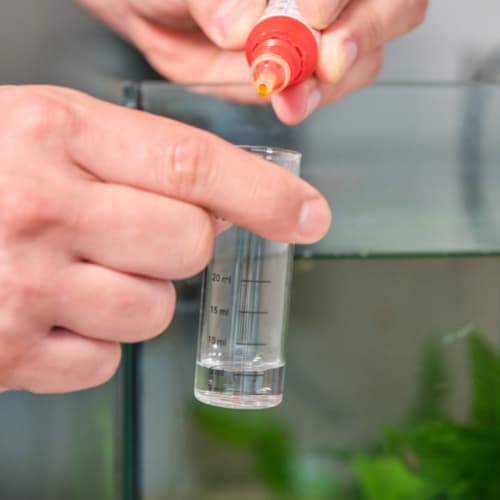
It's crucial to monitor nitrate levels in your tank water. Here are some tips for accurate testing and tracking:
Use a Quality Test Kit
Liquid-based aquarium water test kits will give you the most reliable nitrate readings. Test strips tend to be less consistent. Look for kits that measure at least up to 100 ppm nitrate for freshwater.
Popular options include:
Follow the instructions carefully when testing samples. Make sure to shake the reagents thoroughly.
Test Frequency
Aim to test nitrate levels at least once per week. For tanks with higher stocking levels or that are prone to accumulation, test 2-3 times per week. This allows you to catch rising nitrate before it becomes problematic.
Log Results
Recording your test results over time lets you identify trends and spikes. Tracking also reminds you of when water changes are due. Apps like Aquarium Note (available for Android and IOS) or desktop spreadsheets work well for logging.
Compare to Thresholds
As mentioned earlier, nitrate becomes hazardous above:
- 200 ppm for freshwater aquariums
- 20 ppm for saltwater tanks
Use these thresholds as guides for acceptable levels.
Ways to Remove Nitrate from Aquariums
Once you've identified that nitrate levels are too high in your tank, there are several methods to bring them back down to safe parameters. Here are some of the most common ways to actively remove excess nitrate from aquarium water:
Water Changes
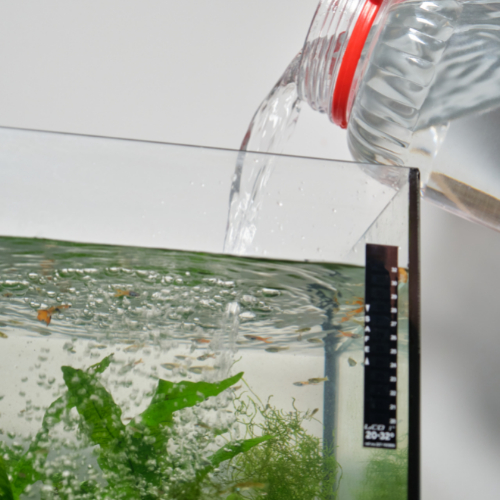
Partial water changes are the simplest way to dilute nitrate. Replacing 25-50% of the water weekly helps reset levels before they build up too much. For tanks with higher nitrate, more frequent smaller changes may work better.
When doing water changes to reduce nitrate, it's important to do the following:
- Use dechlorinated, temperature-matched new water.
- Gravel vacuum the substrate to remove waste.
- Scrub down tank walls to dislodge algae.
- Avoid changing too much water at once.
Chemical Filter Media
Special filter media can help remove nitrate from the water column:
- Carbon - Absorbs some nitrate along with other dissolved organics. It should be replaced monthly.
- Ammonia absorbers - Zeolites and resins bind ammonia before it turns into nitrate.
- Denitrifying resins - Polymer beads house anaerobic bacteria to consume nitrate.
- Phosphate absorbers - Limit phosphates that feed nuisance algae.
Aquatic Plants

Fast-growing stem plants, floating plants, and macroalgae uptake substantial nitrate for growth. Examples include hornwort, anacharis, water sprite, duckweed, and chaetomorpha. Trim plants before they overgrow.
Algae Scrubbers
Algae scrubbers grow nitrate-absorbing algae on an illuminated screen. The algae is then easily removed during cleaning.
Protein Skimming (Saltwater)
Foam fractionators or protein skimmers remove organic waste before it breaks down into nitrate in saltwater tanks.
Now, how can you rapidly reduce high nitrate levels? that's what we will cover next in the following section.
Step-by-Step Method for Rapid Nitrate Reduction
If you find yourself battling extremely high nitrate levels, you can use the following concentrated water change method to bring them down quickly and safely:
1. Test Current Nitrate Level
First, test the water with an aquarium nitrate test kit to determine the starting concentration in ppm. Make sure you know exactly how high it is before beginning.
2. Gradually Adjust pH
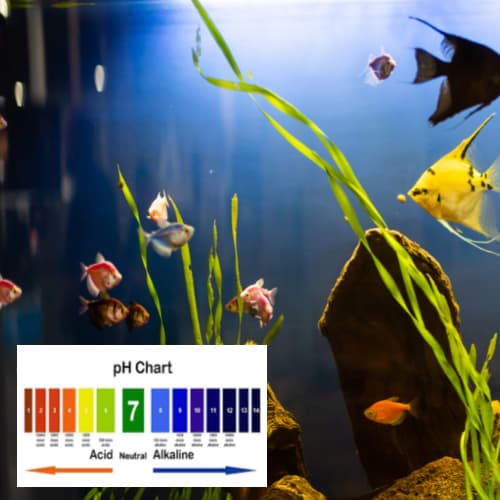
Sudden pH shifts can shock livestock. Slowly adjust the pH over several hours to match what it will be after the water changes.
Use baking soda to raise pH or an additive to lower pH if needed.
3. Reduce Water Level Substantially
Remove 50-70% of the aquarium water. This concentrates the nitrate into a smaller volume of water.
Use a gravel vacuum to remove debris from the substrate while draining.
4. Refill and Retest Nitrate
Refill the tank with dechlorinated water that is temperature-matched. Then immediately test nitrate again.
The level should now be much lower than the starting concentration.
5. Repeat as Needed
You can perform multiple back-to-back water changes in this manner. Retest nitrate after each round.
Repeat the process until nitrate drops to an acceptable level for your aquarium inhabitants.
Don't remove more than 70% at one time and allow time between rounds for livestock to adjust.
Test regularly afterward and resume regular maintenance to prevent nitrate from climbing again. Use biological and chemical filtration, algae control, and plants to help keep levels low.
Important Considerations

When utilizing the rapid nitrate reduction method, keep the following tips in mind:
Take It Slow If Concerned
If you worry about stressing or shocking the fish with large water changes, take a more conservative approach.
- Reduce levels gradually over several days rather than all at once.
- Limit water removal to 50% at a time.
- Allow a few hours between water changes for recovery.
Only Reduce to Acceptable Levels
There's no need to drive nitrate down to zero if species can tolerate higher levels.
Reduce just until within safe parameters to avoid overdoing water changes.
Resume Regular Maintenance
This rapid reduction method is for emergencies. After, maintain lower levels through standard partial water changes and filtration.
Consider Permanent Solutions
Seriously high nitrate indicates an underlying issue. Look at stocking levels, feeding amounts, filtration capacity, and lack of plants.
Quarantine New Additions
Quarantining new fish before adding them to the main tank prevents introducing diseases while nitrate is low.
With some care and attention to inhabitants, rapid nitrate reduction can quickly improve a tank environment without adverse effects.
Maintaining Low Nitrate After Reduction
After rapidly reducing high nitrate levels, it's crucial to maintain lower levels in the long term. Here are some tips to prevent accumulation after fixing the issue:
Continue Testing Regularly
Keep using your aquarium nitrate test kit 1-2 times per week. This allows you to stay on top of any increases early.
Change Water at First Signs
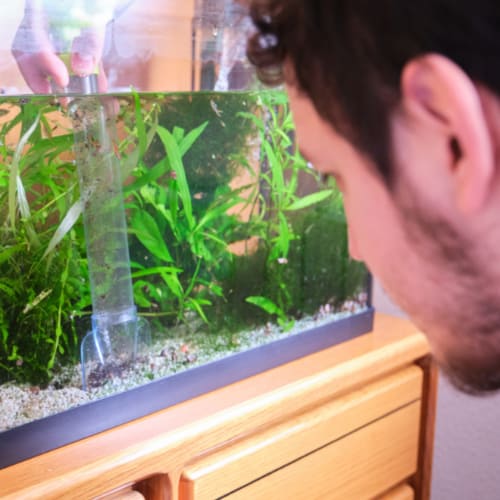
At the first indication nitrate is rising again, do an immediate partial water change to dilute it. Don't allow it to creep up uncontrolled.
Use Permanent Removal Methods
Use the nitrate removal methods mentioned earlier in this article to absorb it continuously:
- Add fast-growing aquatic plants
- Maintain algae scrubbers
- Use specialty filter media
- Maintain protein skimming on reef tanks
Avoid Overstocking and Overfeeding
These are primary causes of nitrate accumulation, so be conservative with the number of fishies in your tank and feeding amounts.
Supplement With Plants and Algae
Adding supplemental macroalgae and nitrate-absorbing plants provides a buffer as they consume nitrate continuously.
Upgrade Filtration If Needed
An inadequate biological filter can lead to nitrate buildup. Invest in a higher-capacity canister filter if water changes aren't keeping up.
Staying vigilant will prevent nitrate spikes after fixing high levels.
Frequently Asked Questions
Let's now answer some frequently asked questions related to the topic at hand. This will ensure you will be ready in the future and take action before the nitrate levels spike out of hand.
How Often Should I Test for Nitrates?
Test aquarium water for nitrates 1-2 times a week. This allows you to catch rising levels before they become problematic. Test more frequently if you've had ongoing issues.
How Much Water Should Be Removed?
To create a concentration effect, remove 50-70% of the total water volume. Removing any more risks severely stressing the tank inhabitants.
Is This Method Safe for Delicate Fish?
Go slowly with sensitive species like discus. Limit water changes to 30-40% every time and allow several hours between changes. Observe the fish closely.
Will a Massive Water Change Crash the Nitrogen Cycle?
No, the beneficial bacteria that process the nitrogen cycle live mostly on surfaces like filter media, not in the water. As long as filtration continues running, the cycle will persist through very large water changes.
Should I Stop Feeding During Nitrate Reduction?
Yes, halt feeding for a few days before and during the reduction process. This prevents fish waste and uneaten food from spiking ammonia and nitrite levels.
How Low Should I Reduce Nitrates?
Only bring nitrate down to safe levels for your particular fish and tank type. For example, reduce to below 50 ppm for freshwater fish but closer to 5-10 ppm for a reef tank. No need to go excessively low.
Rapid nitrate reduction can resolve emergencies, but maintaining appropriate levels long-term is ideal.
Conclusion
In the dynamic world of aquarium keeping, maintaining a healthy environment for your aquatic inhabitants requires vigilance and strategic interventions.
Throughout this guide, we've explored the intricacies of reducing nitrate levels in your aquarium and ensuring the well-being of your fish and other aquatic life.
By following these steps and integrating permanent solutions, you're not only saving your fish from potential harm but also cultivating a captivating aquatic masterpiece that will bring you joy for years to come.
If you have any questions or comments, please leave them in the comments section below or send us an email.
Thanks for reading!

